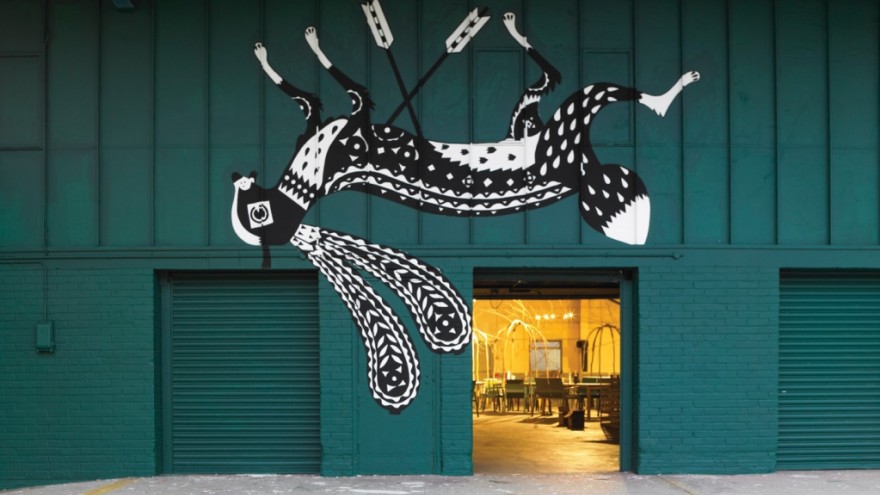First Published in
“I don’t know what’s going on,” says Ville Relander, project manager for the City of Helsinki and responsible for the Finnish capital’s food culture strategy. “It used to be the most boring place on Earth, with rules and regulations… And somehow people started to create their own city. ‘Restaurant Day’ is part of this new spirit.”
Relander is referring to the latest pop-up restaurant craze to hit Helsinki, which is gearing up towards its title as World Design Capital 2012, an award bestowed every two years by the International Council of Societies of Industrial Design. On Restaurant Day, anyone can open a restaurant for 24 hours. About 200 temporary venues were created during the August event. And in November, the World Design Capital crew will host a one-day cake restaurant in the city.
“If anyone has ever dreamed about running a restaurant, it’s never been as easy as it is today. You can create your own pop-up restaurant anywhere in the world – in parks, on roofs, wherever. Even on a bicycle!” adds Relander.
Indeed, temporary experimental cook-ups have become something of a performance art, if Helsinki is any cultural barometer. Take the Hel Yes! pop-up restaurant, which made a punchy debut at last year’s London Design Festival. Hosted by Finnish culinary expert Antto Melasniemi, it brought a taste of Nordic forests to the dinner table in a “straightforward and simple” style. Key Finnish ingredients like fish roe, game and preserved plants were supplemented by daily elements sourced by hunter-gatherers. Pure ingredients and traditional cooking were key, combined with design, lighting, décor and art installations.
In September this year Melasniemi hosted an evening feast in Hel Yes! style at a harbour-side Helsinki venue. The physical furniture remnants of the restaurant’s first pop-up iteration were literally burning on an open fire at the entrance, a ritualistic act to prepare the ground for its next incarnation, in Stockholm in February. The fiery gesture somehow typified the creative team behind it: Inspired, conceptual and poignant yet also understated – the reason for the burn was left unexplained to the bustling media contingent. The lower floor of the building played an edgy video installation against a tiled wall; the upper floor read as part-installation, part-restaurant and was soon heaving with chatter, cooking and a string music performance.
Melasniemi, interviewed in feverish post-cooking mode, says the pop-up food phenomenon is often a ploy used for marketing purposes whereas for the Hel Yes! team, it is a way to perform something with food that would be impossible in a more established, formal environment. “So what we want to do is use it as a platform to experiment with things, which is what pop-up culture is very good for. Just opening a restaurant for two weeks doesn’t make sense unless there is some kind of idea behind it,” he adds.
The pop-up food fad in Helsinki benefits in part from a general resurgence in Finnish food. According to Relander, Finns have the currently embattled Italian Prime Minister Silvio Berlusconi to thank. In 2001, Berlusconi reportedly said Finland should not host the European Union’s food-safety agency because Finns did not know what prosciutto was. Four years later, then president of France, Jacques Chirac added insult to injury, remarking of the British: “You can’t trust people who cook as badly as that. After Finland, it’s the country with the worst food.”
Relander says the Finnish were irked into upping their game. “Food culture and restaurant culture was dead five, six, seven years ago but in 2005 we got a wake-up call.” He explains that Finnish food is so strong and intense because of the water, which he rates among the cleanest in the world. “Finnish food and design is the same,” he adds, “simple, clear and practical.”
The pop-up fad is broadly international, however. For instance Argentinian Eloise Alemany is well known for her pop-up restaurant Noches Grimod and store Souvenir in Buenos Aires. Secret Sensory Suppers at September’s London Design Festival included experiential evenings of banqueting in a Masonic Temple. One was shaped around the structure of a musical sonata comprising five movements of “intrigue, participation and excess”. A mobile Tex Mex canteen roams Los Angeles, only locatable on Twitter. And taking things to new extremes, patrons at the recent summer Edinburgh Festival could not get enough of La Concepta, a daily shifting restaurant with make-believe food where the dishes were a mix of art, jokes, anecdotes, aphorisms, audio installations and choreographed dance moves.
Rather than abating, pop-ups seem to be morphing into ever more creative forms. For instance, a new restaurant to launch in Paris will be a “slow pop-up” that will last for three years, says Johannesburg-based trend analyst Dion Chang. He reckons the trend is not going away because of a culture of immediate gratification. “You want something new, something novel. Laid onto that is a major, major tipping point in terms of homogenous mall culture – we want something to surprise us. We want something that is engaging. Pop-ups are novel and that is what people love. I think we have also cultivated attention spans of lab rats. We get attention deficit disorder and want to move on.”
Social media plays into this novelty dynamic, in particular given that pop-up venues are often shifting and known only to certain people. Chang, director of Flux Trends, links this aspect to an element of gaming coming into our lives, sometimes in subtle ways. “It’s a new motivation but we are starting to see gaming seep into so many areas of how we do things and how we need that challenge. When you follow things like a little secret group, there’s a huge element of play.” Pop-ups offer a fleeting offline experience while the medium to get there is online – “a beautiful combination of the two”, he adds.
The second major factor Chang highlights driving the pop-up trend is economic: “We are in another major depression economically, so you just see more and more spaces shut down. People need to try and get a business going but can’t pay exorbitant rent hence the pop-up element.” Overlaid is a shift from a “me” era to a “we” era, Chang adds: “You really have to collaborate and think of innovative stuff for business to go forward in this climate.”
Kim Gurney visited Helsinki during Design Week in September as a guest of World Design Capital Helsinki 2012. She is a freelance journalist and visual artist based in Johannesburg. Website: www.kimgurney.com














